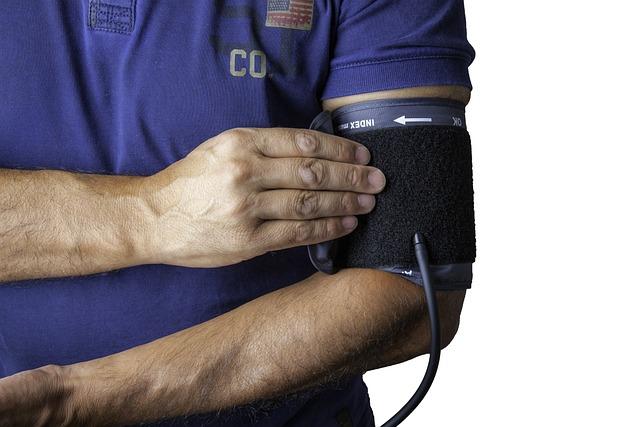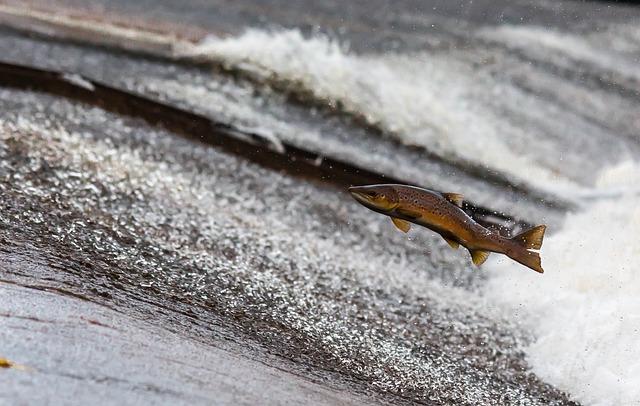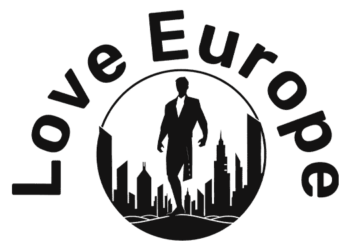Norways salmon Farming Trade Faces Pivotal Sustainability Challenges
The looming deadline for sustainable feed elements is sending ripples of tension throughout Norway’s salmon farming sector. With growing scrutiny from environmental teams and regulatory our bodies, farmers are grappling with the problem of securing a dependable and sustainable supply of fish feed. This feed is important for the well being and progress of farmed salmon, but it surely typically depends on wild-caught fish, elevating severe issues about overfishing and ecological stability. To adapt, stakeholders are exploring alternative feed sources, together with plant-based proteins and bug meals, however scalability and dietary adequacy stay urgent points.
This transition just isn’t with out its hurdles. The feed trade should innovate to supply sustainable choices that preserve progress charges and well being requirements required by the market. Farmers are specializing in three important methods to deal with these challenges:
investing in Analysis: Collaborating with scientists to develop superior feed formulations.Diversifying Sources: Incorporating extra sustainably harvested elements, reminiscent of algae and legumes.Enhancing Regulatory Compliance: Staying forward of laws by adopting finest practices in sustainability.Feed SourceSustainability RatingCurrent UseFish MealLowHighPlant ProteinModerateModerateInsect MealHighEmergingAlgaeHighResearch Part

The sourcing of feed elements is a vital issue impacting each the well being of farmed salmon and the general environmental footprint of aquaculture. As salmon farms in Norway face the looming sustainability deadline, the urgency to undertake accountable sourcing practices turns into much more obvious. Substances reminiscent of fish meal and fish oil, historically derived from wild fisheries, contribute considerably to the ecological stability. Although, unsustainable fishing practices can result in overfishing, habitat destruction, and biodiversity loss. To mitigate these dangers, farmers are more and more exploring alternate options reminiscent of:
Plant-based proteins – Using crops like soy and peas to scale back reliance on marine assets.Bugs – Harnessing insect meal as a protein-rich feed ingredient that requires minimal land and water.By-products – Incorporating trimmings and by-products from the meals trade to attenuate waste.
Adopting these progressive feed sources not solely enhances the dietary profile of the fish but in addition considerably lowers the carbon footprint related to customary feed ingredient manufacturing. Enhanced sourcing methods can thus yield enhancements in salmon well being,evident by:
Well being IndicatorsConventional FeedAlternative feedGrowth RateOptimalEnhancedFat ContenthigherBalancedImmune ResponseStandardImproved
Farmers who implement sustainable feed sourcing practices are more likely to expertise a twin profit: more healthy fish and a minimized ecological influence. This proactive method aligns with world sustainability targets and positions the Norwegian salmon trade as a frontrunner in accountable aquaculture, setting a precedent for future practices within the sector.

Regulatory Pressures: Upcoming Deadlines and Their Implications for Farmers
The looming sustainability deadline is creating palpable anxiousness amongst Norway’s salmon farmers, who at the moment are going through stringent regulatory measures geared toward selling accountable aquaculture practices. Farmers are required to evaluate their feed sources and guarantee they meet the brand new sustainability standards, which is able to considerably influence their manufacturing and operational prices. Key implications embody:
Elevated Value of Compliance: Many farmers could must spend money on costlier however sustainable feed substitutes.Provide Chain Disruptions: A sudden shift to sustainably sourced elements may result in potential shortages, affecting fish progress charges.Market Entry Challenges: Lack of ability to adjust to the brand new laws could prohibit entry into profitable markets that prioritize sustainability.
to navigate these pressures, farmers should adapt swiftly, implementing methods that not solely align with regulatory calls for however improve their market competitiveness. A latest survey indicated that 70% of farmers are exploring partnerships with sustainable feed suppliers, whereas one other 40% are investing in different feed analysis.The urgency of compliance has galvanized discussions inside the trade, resulting in initiatives reminiscent of:
InitiativeDescriptionResearch CollaborationsJoint ventures with universities to develop progressive feed options.Improved TraceabilityImplementing methods to trace feed sources for readability.Coaching ProgramsWorkshops for farmers on sustainable practices and compliance procedures.

Modern Alternate options: Exploring Sustainable Feed Options for Salmon Aquaculture
Because the sustainability deadline approaches, salmon farmers in Norway are actively in search of progressive feed alternate options that may decrease environmental influence whereas sustaining fish well being and progress.Conventional feed elements, typically derived from fish meal and fish oil, are underneath scrutiny as a consequence of overfishing and ecological pressure. Subsequently, the trade is pivoting in the direction of sustainable choices that not solely make sure the dietary wants of the fish are met but in addition align with broader targets of environmental stewardship. Potential alternate options gaining traction embody:
Insect Meal: Sourced from farmed bugs, this feed is wealthy in protein and may be produced with a smaller ecological footprint.Plant-Primarily based Proteins: Substances like soy, peas, and algae are being explored for his or her potential to switch fish meal.By-Merchandise from Agriculture: Using crop leftovers may present a twin advantage of waste discount and nutrient provide.
A number of Norwegian aquaculture companies are pilot-testing these novel feed options, investing in analysis partnerships with universities and sustainability NGOs. Early outcomes point out that these alternate options can meet the required progress charges and well being requirements for salmon whereas decreasing reliance on marine assets. The shift in the direction of these sustainable feed sources may play a vital function in the way forward for aquaculture,but challenges stay in scaling manufacturing and guaranteeing cost-effectiveness. A desk summarizing the comparative advantages of various feed alternate options is illustrated under:
Feed TypeProtein SourceEnvironmental ImpactAvailabilityInsect MealInsectsLowIncreasingPlant-BasedGrains & PulsesModerateWidely AvailableCrop By-ProductsAgricultural WasteModerateSeasonal

Trade Stakeholders Name for Collaboration and Transparency in Sourcing Practices
Because the deadline for sustainable sourcing practices approaches, trade stakeholders are more and more voicing their issues about the way forward for salmon farming in Norway. The main focus is on the sustainability of feed elements,that are essential for sustaining the well being and progress of farmed salmon. Farmers, environmental teams, and policymakers are recognizing that collaboration and transparency are important to navigate these challenges and make sure the long-term viability of the trade. Key factors of debate embody:
The necessity for clearer laws relating to feed sourcing.Establishing partnerships between farmers, suppliers, and environmental NGOs.Elevated investments in analysis and improvement for different feed sources.
Furthermore, transparency in provide chains will promote belief amongst customers who’re changing into more and more involved concerning the ecological footprint of their meals. Implementing monitoring methods and sharing information on sourcing practices can improve accountability and drive sustainable practices throughout the trade.A latest survey indicated that main stakeholders are in favor of adopting progressive approaches for sourcing to mitigate dangers related to future laws. This proactive method is predicted to foster a extra resilient and accountable salmon farming sector in Norway.
Present Challengesproposed SolutionsRegulatory compliance with sustainability deadlinesStrengthen partnerships and collaborative initiativesConsumer mistrust relating to sourcing practicesEnhance transparency by data-sharingLimited different feed optionsInvest in R&D for sustainable alternate options

Navigating the Future: Methods for Compliance and Lengthy-Time period Sustainability in Salmon Farming
As salmon farmers in Norway face an impending sustainability deadline for important feed elements, it turns into essential to implement methods that align each compliance and environmental stewardship. The shift in the direction of sustainable aquaculture includes scrutinizing feed elements, transitioning to alternate options like plant-based proteins, and guaranteeing that bycatch from fisheries is minimized. collaboration with analysis establishments and trade companions can support in growing progressive feed choices that meet regulatory requirements whereas additionally supporting eco-amiable practices. moreover,embracing certifications reminiscent of ASC (Aquaculture Stewardship Council) can present a framework for operational transparency and enhanced marketability.
To help long-term sustainability, it’s certainly important that producers spend money on applied sciences that optimize useful resource use and scale back environmental influence. Methods could embody:
Implementing closed-loop methods that recycle water and vitamins.Leveraging information analytics to observe feed effectivity and fish well being.exploring different feed sources, reminiscent of insect protein or algae.
As well as, creating an ecosystem the place stakeholder engagement is prioritized will permit farmers to raised adapt to evolving laws and client calls for. By fostering robust relationships with native communities,environmental teams,and governmental companies,salmon farmers can create a extra resilient and sustainable framework that not solely meets compliance wants but in addition promotes general trade progress.
The Conclusion
Because the deadline for sustainability compliance approaches, Norway’s salmon farmers discover themselves at a crucial juncture, grappling with the urgent challenges of feed ingredient sourcing and environmental duty.The trade’s reliance on finite assets and the looming menace of regulatory constraints spotlight an pressing want for innovation and adaptation. With market pressures and ecological consideration on the forefront, stakeholders should navigate the complexities of sustainable practices to safe the way forward for salmon farming in Norway. Because the clock ticks down, the choices made right now will undoubtedly form the trade’s trajectory, underscoring the significance of collaborative efforts and proactive measures in establishing a resilient and sustainable aquaculture sector.The trail ahead would require not solely dedication and ingenuity but in addition a willingness to embrace transformative practices that prioritize each financial viability and environmental stewardship. Policymakers, farmers, and customers alike will play a pivotal function on this evolving narrative, because the clock continues to depend down towards a extra sustainable future for Norway’s salmon farming trade.
Source link : https://europ.info/2025/03/07/norway/norway-salmon-farmers-feel-the-fear-as-vital-feed-ingredient-sustainability-deadline-looms-undercurrent-news/
Creator : Olivia Williams
Publish date : 2025-03-07 07:38:00
Copyright for syndicated content material belongs to the linked Source.


